- Savage Blog
- Crossing the Fence: Wildlife-Friendly Fencing Supports Conservation
Crossing the Fence: Wildlife-Friendly Fencing Supports Conservation
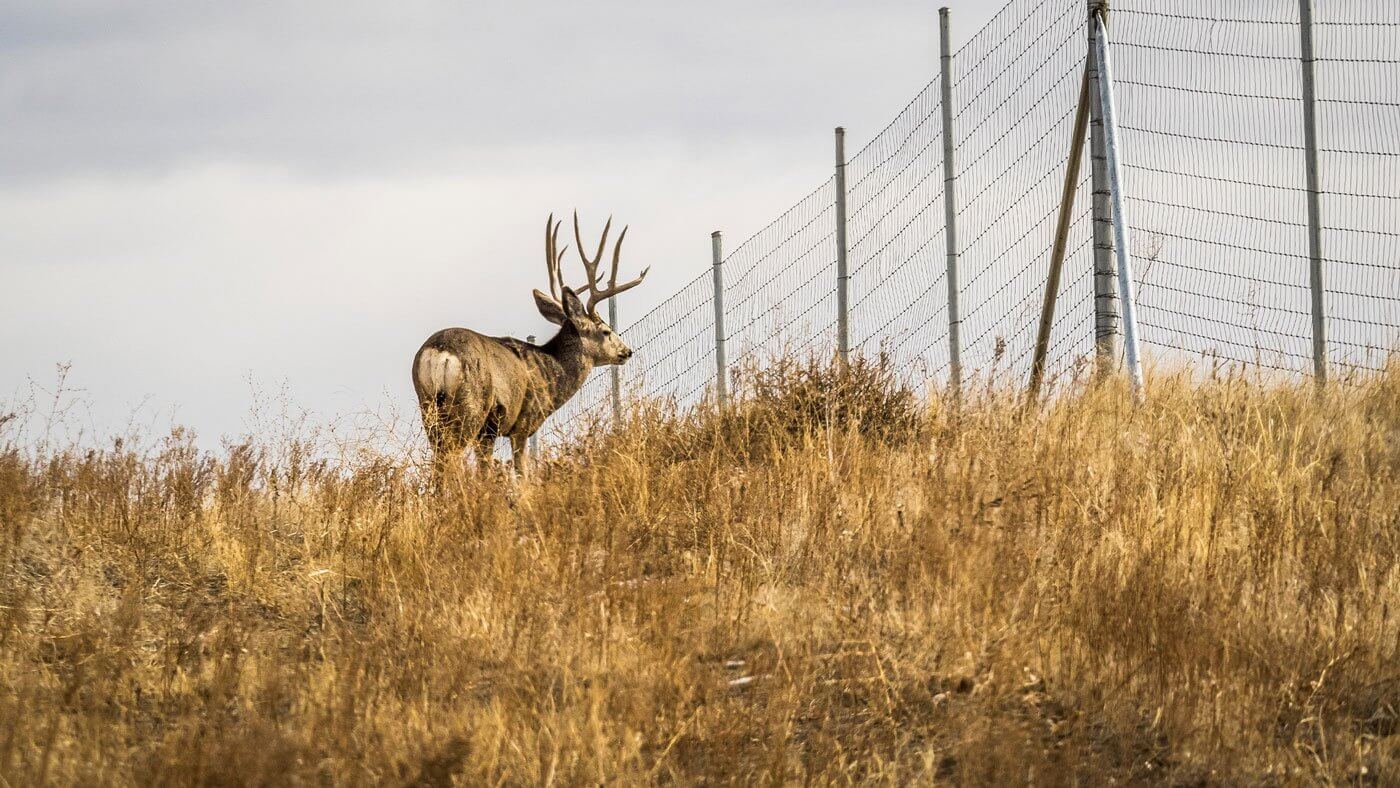
Fences are a common feature across the American West. That’s probably because the total fence length in the region is estimated to be over 600,000 miles. That’s enough fencing to wrap around Earth’s equator around 24 times! Fences have an important use; they mark property lines, help manage livestock, and define land use. While fences have become part of the human world, they can present a problem in the natural world. Fences can fragment essential mule deer ranges, block migration routes, and increase the risk of wildlife-vehicle collisions.
That’s why the Mule Deer Foundation (MDF) works with both sides of each fence to develop solutions that improve habitat connectivity and place more wildlife-friendly fencing on the landscape. MDF has a goal of helping to install and retrofit 1,000 miles of wildlife-friendly fencing by 2027. It can take upwards of $30,000 to replace one mile of a fence, and we are honored to have Savage Arms as a sponsorship partner to help MDF accomplish this important work.
Why fencing matters for mule deer
Mule deer rely on migrating back and forth between high elevation forests and valley floors to access food and cover on their summer and winter ranges. Depending on the deer herd, this migration distance can be over 100 miles each way. On this journey, mule deer need a variety of habitats to survive on that may include rangeland, sagebrush, woodlands, and agricultural lands.
When crossing these landscapes, fences can create gaps or barriers that force deer to find more dangerous routes, spend more energy locating crossing points, or become entangled in fence lines. In addition, roads that cut through habitat increase the potential for deer-vehicle collisions, a serious threat to both wildlife and people. Barbed wire fencing has been the predominant material used in fencing across the western U.S. If these fences were built too high and/or low with closely spaced strands, it can cause injury to deer as they jump over, pass through, or crawl under them.
Wildlife-friendly fencing helps solve these challenges by balancing land-use needs with safer fence crossings. The goal is simple: design and maintain fences that keep communities safe while letting mule deer and other wildlife roam freely through the landscapes they depend on.
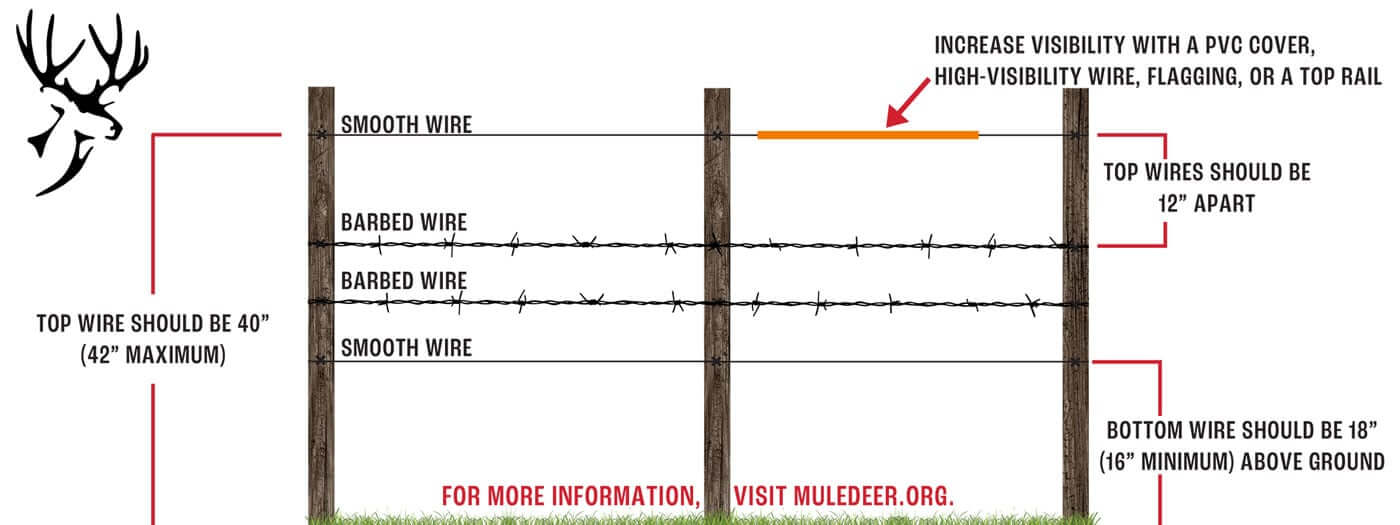
Core fencing principles for conservation
There are important factors that MDF considers as it prioritizes where and how to tackle fencing projects.
- Prioritize mule deer movement: Fencing designs need to allow deer to pass through or around barriers without injury or entrapment. Wherever possible, keep good crossing opportunities near migration corridors, water sources, and seasonal ranges.
- Minimize entanglement and injury: Avoid fencing materials and designs that readily cause injury, such as sharp edges, closely spaced wires, entangling mesh, or rough materials. Smooth, durable options with clear paths reduce harm to animals.
- Respect human needs: Fence designs should meet human goals—security, livestock protection, property boundaries—while incorporating wildlife passage needs.
- Support crossings and breaks: Where a fence intersects critical wildlife routes or roads, incorporate culverts, underpasses, overpasses, or strategically placed gaps to maintain connectivity without compromising safety.
- Use natural landscape features: Think like a deer. Place fences to work with topography, vegetation, and animal behavior. A fence that follows natural features (draws, ravines, or ridgelines) can minimize obstruction while meeting land-management objectives.
- Fences can be maintained and monitored: Checking fences regularly helps reduce the chances of broken wires, loose posts, or overgrown vegetation that creates unintended obstacles. A well-maintained fence is a safer one—for people and wildlife.

Private Landowner Considerations
Are you a landowner considering modifying fences to be more wildlife-friendly? Start by assessing your property’s wildlife presence and movement patterns. Know you don’t have to do this alone. Protecting wildlife’s movement on private properties can be a collaborative effort. Engage with local wildlife agencies, extension services, or MDF and other conservation organizations to learn about regional best practices and available incentives or technical support. Even small changes, adding a single wildlife-friendly gap, choosing non-entangling materials, or maintaining a clean fence line, can contribute to healthier deer populations and more resilient landscapes.
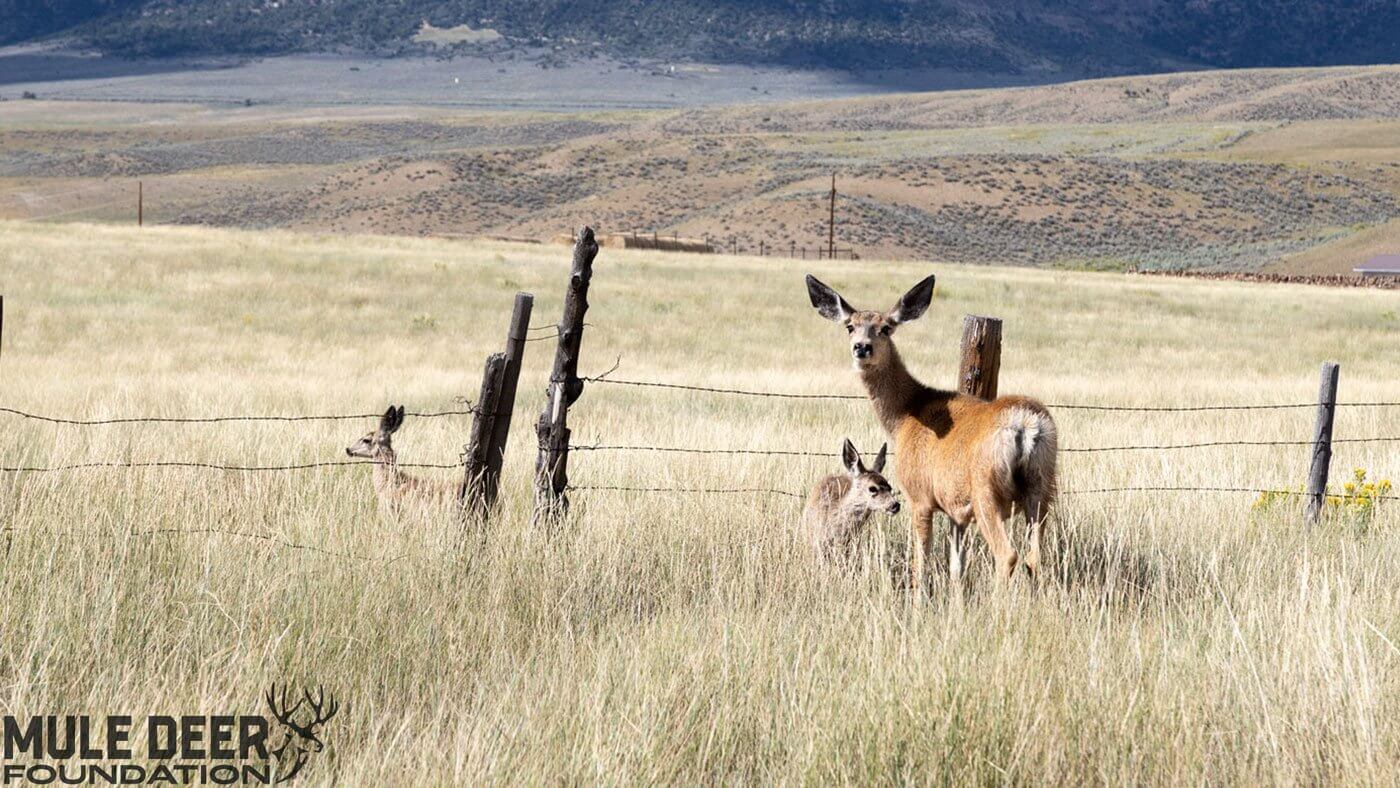
As you repair and check fences, be thorough. Fences that look sturdy may become a wildlife hazard if a post is leaning, a wire is snagging, or vegetation has grown into the fence line. Regular inspection, especially after storms, heavy snowfall, or seasonal growth, ensures that the fence remains safe for people, livestock, and wildlife. Quick repairs, such as replacing damaged wires, re-tightening posts, clearing out vegetation, and keeping strand width permeable, can help reduce the risks for deer and other species that cross your properties.
Hunter considerations
Hunters can play a surprisingly big role in making fences less hazardous for wildlife across the West, especially in big game country where mule deer move between seasonal ranges. Here are some effective ways to be part of this solution as you hunt on public or private lands.
Spotting Problem Fences
- Top wire too high: Over ~42″ can block deer jumps.
- Bottom wire too low: Under ~16″ prevents small deer from crawling under.
- Loose or broken wires: Can tangle legs or antlers.
- Old, barbed wire “ghost” fences: Abandoned, rusting strands hidden in grass or sagebrush.
- Clumps of hair on wires: Sign wildlife are struggling to cross.
Reporting Hazards
- Mark location: Use GPS, a mapping app pin, or a landmark description.
- Photograph the fence: Show the problem area and surroundings.
- Who to tell: Landowner (if known), state wildlife agency, BLM or USDA Forest Service office, or conservation groups (Mule Deer Foundation, Backcountry Hunters & Anglers, local land trusts).
Hunter’s Etiquette Around Fences
- Never cut or alter fences without permission.
- Always close gates you open.
- Avoid driving along fence lines during wet conditions as ruts can destabilize posts.
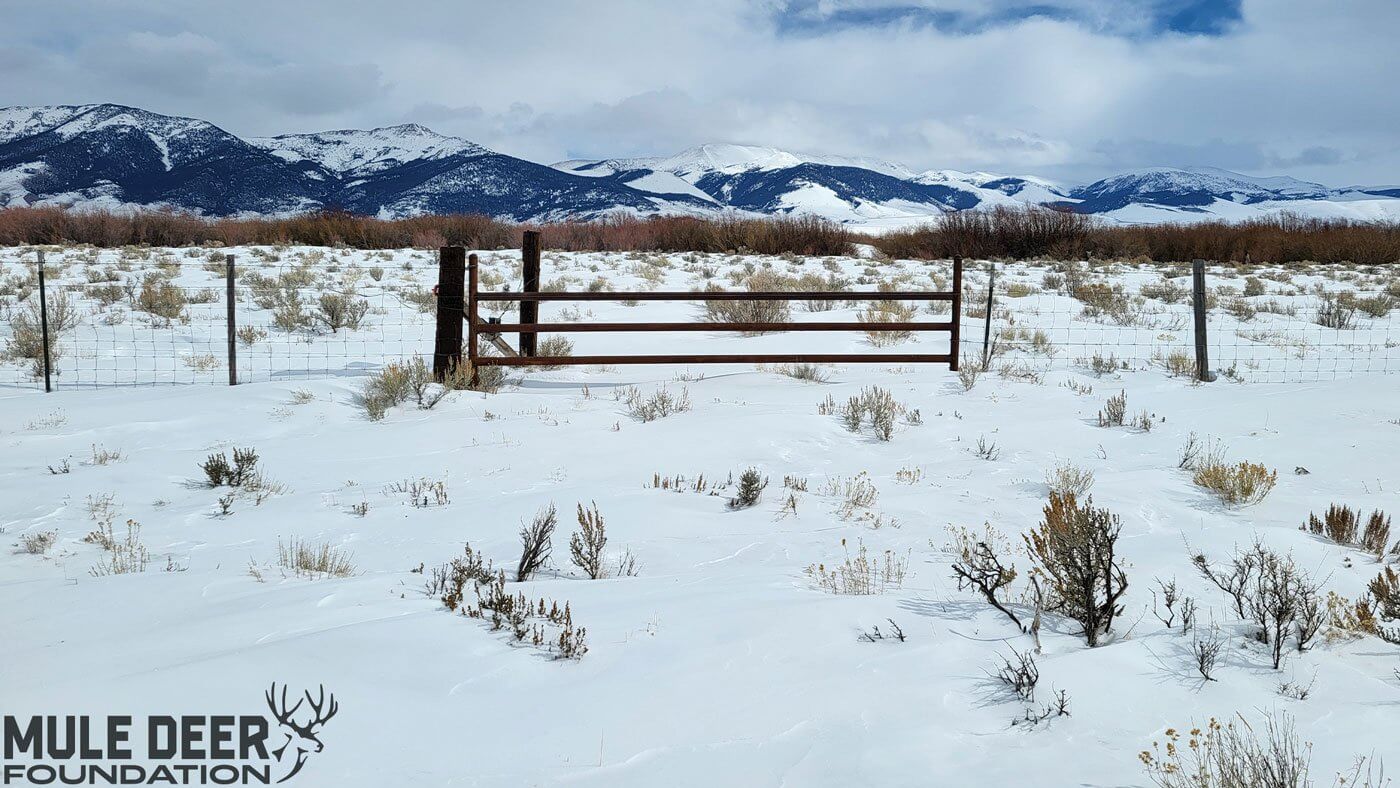
Be intentional about fencing
The story of mule deer is written by the hoofprints that have crossed natural landscapes and rural communities for eons. Fences don’t have to be barriers in this story. With intentional design, maintenance, and collaboration, fences can become easier hurdles for deer to cross. As stewards of mule deer country, our thoughtful planning and ongoing care can keep deer moving, habitats intact, and rural communities successful. By becoming a member of the Mule Deer Foundation and joining your local chapter, you become directly involved in getting these projects done on the ground and will help us reach 1,000 repurposed fence miles by 2027.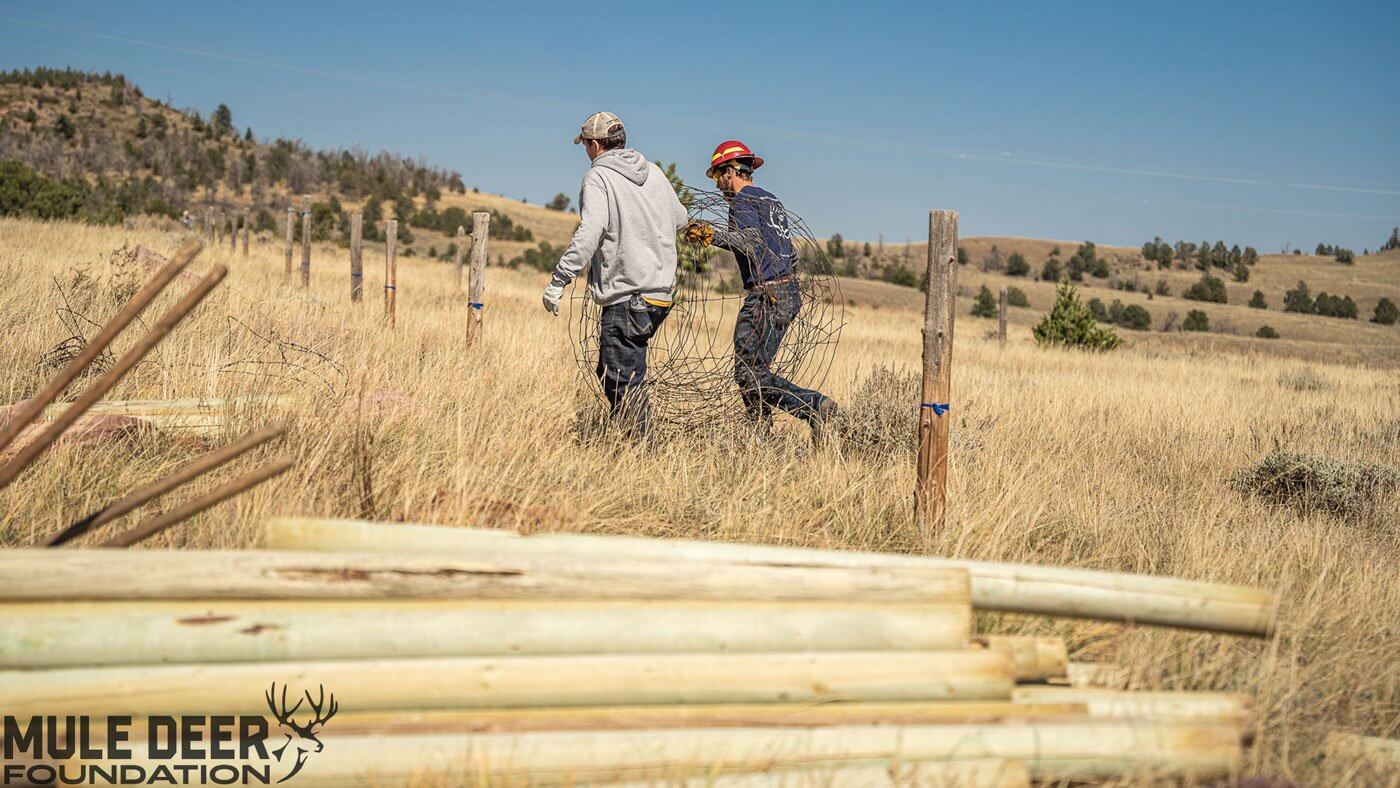
Become a member of the Mule Deer Foundation or the Blacktail Deer Foundation or both! Click here to join: https://muledeer.org/product-category/membership/ or https://www.blacktaildeer.org/

